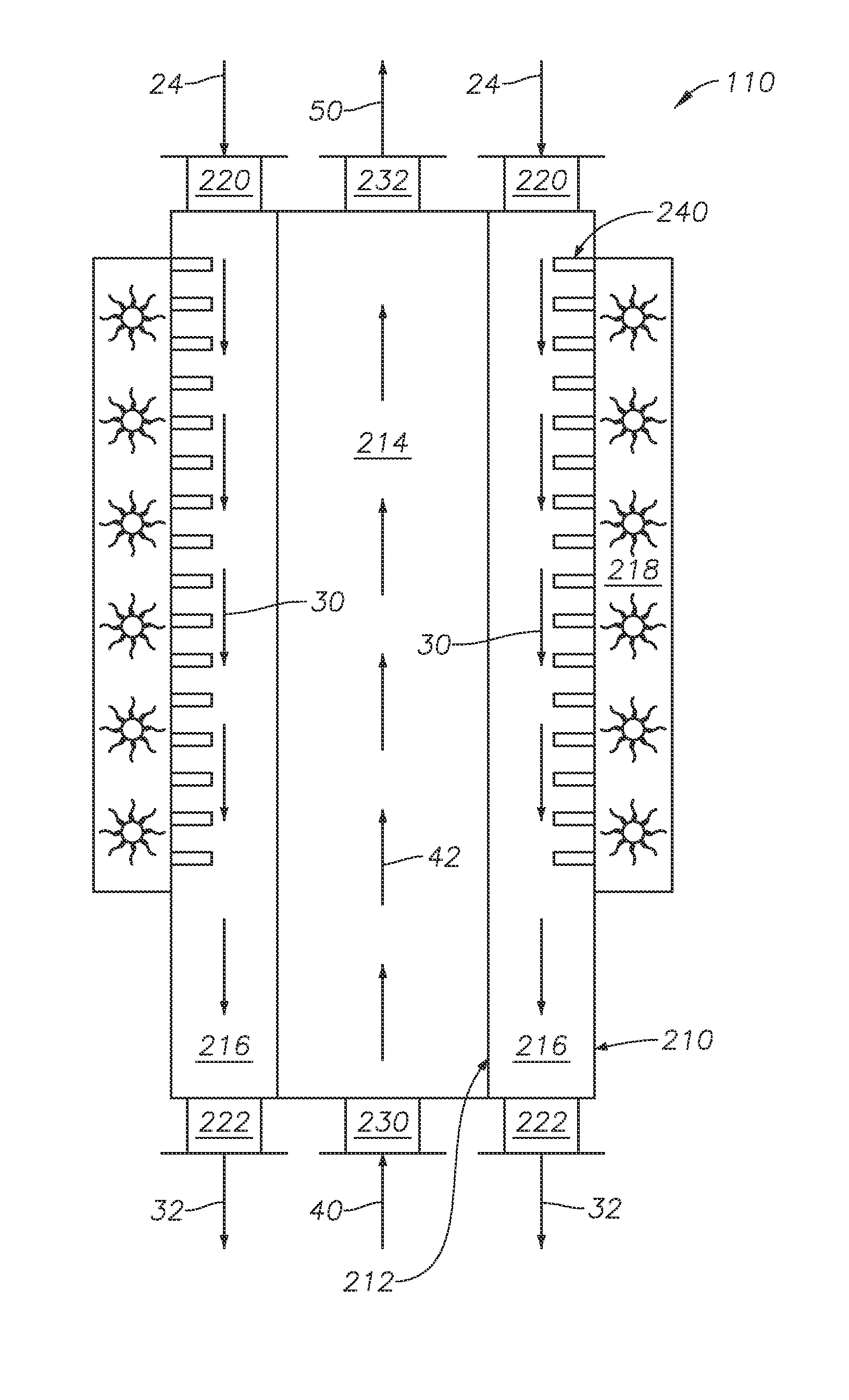Process for heavy oil upgrading in a double-wall reactor
a double-wall reactor and heavy oil technology, applied in the direction of hydrocarbon oil cracking process, supercritical condition process, effluent separation, etc., can solve the problem of reducing large amount of low economic byproducts, and large consumption of hydrogen to produce the product of high quality, so as to reduce the chance of radical oligomerization, reduce the amount of asphaltene, sulfur and other impurities, and reduce the formation of coke
- Summary
- Abstract
- Description
- Claims
- Application Information
AI Technical Summary
Benefits of technology
Problems solved by technology
Method used
Image
Examples
example
Comparative Example
[0054]Two simulations were created to compare a single-wall reactor and the double-wall reactor of the present invention. In both simulations, a hydrocarbon feedstock at a rate of 10 barrels / day was pressurized to a pressure of 25.0 MPa and heated to a temperature of 125° C.
[0055]In the single-wall reactor simulation, the hydrocarbon feedstock was mixed with a feed water at a pressure of 25.0 MPa and a temperature of 460° C. The water stream was a water recycle stream from the liquid separator downstream of the reactor. The single-wall reactor was simulated as a tubular vessel having an internal volume of 10 L. The liquid yield was 95 wt %. Table 1 includes the operating conditions of the various streams. Table 2 shows the properties of the hydrocarbon feedstock and the upgraded hydrocarbon streams.
TABLE 1Stream Operating ConditionsStream NameHeatedHydrocarbonWaterHydrocarbonHeatedMixedReactorCooledDepressurizedFeedstockFeedFeedstockWaterStreamEffluentEffluentStre...
PUM
| Property | Measurement | Unit |
|---|---|---|
| temperature | aaaaa | aaaaa |
| residence time | aaaaa | aaaaa |
| temperatures | aaaaa | aaaaa |
Abstract
Description
Claims
Application Information
 Login to View More
Login to View More - R&D
- Intellectual Property
- Life Sciences
- Materials
- Tech Scout
- Unparalleled Data Quality
- Higher Quality Content
- 60% Fewer Hallucinations
Browse by: Latest US Patents, China's latest patents, Technical Efficacy Thesaurus, Application Domain, Technology Topic, Popular Technical Reports.
© 2025 PatSnap. All rights reserved.Legal|Privacy policy|Modern Slavery Act Transparency Statement|Sitemap|About US| Contact US: help@patsnap.com



